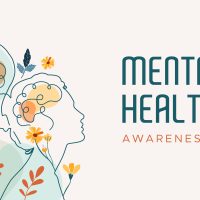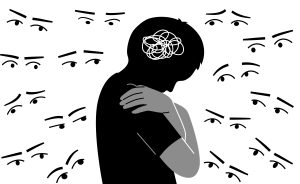May Newsletter

Orbit Health
May Newsletter

Community Partners & Friends,
As we continue to enjoy the Spring season and celebrate our new healthcare partnerships and valued providers, the Orbit Health team would also like to recognize the significance of May as “Mental Health Awareness Month.”
Of course, there are various days, weeks, and months on the calendar that are used to bring awareness to different health and social missions. But we’re particularly passionate about Mental Health Awareness Month for a couple of reasons. First, it’s an opportunity to increase awareness about the prevalence of mental health challenges and the continued need for appropriate resources. And second, it encourages honest and open communication that helps reduce the stigma often associated with the topic.
While society has come a long way from decades past in addressing mental health, improving access to care, and reducing associated stigma, there’s still much work to be done. And Orbit Health is committed to our mission of achieving these objectives. Thank you to all of our partners, providers, and community friends for the continued support!
Q+A with Psychiatrist
Kathy Gallardo, MD

How common are undiagnosed mental health conditions from your experience?
Undiagnosed mental health conditions are very common. Many people quietly endure symptoms of depression, anxiety, trauma, or neurodevelopmental conditions for years without recognizing what they’re experiencing—or without having access to a clinician who can help name and treat it. Particularly in adolescence and early adulthood, mental health concerns often emerge as vague difficulties in functioning: fatigue, irritability, school or work struggles, or relationship conflict. These may be misattributed to character flaws or dismissed as just part of life, rather than seen as signs of underlying distress that deserves attention and support.
At the same time, we’re living in a cultural moment where psychological language and diagnostic categories have moved into the mainstream. For some, having a diagnosis can feel validating—a way to explain long-standing difficulties or gain access to support and community. However, this cultural shift brings a parallel challenge: many individuals now come to clinicians already identifying with a specific diagnosis they’ve seen reflected online or in peer networks. Sometimes they do meet full criteria; other times, they don’t—but their suffering is real. In these moments, the clinician’s task is not to dismiss, but to understand what the diagnosis represents to that person. It can be an opportunity to explore the story behind their symptoms, the need for meaning, and the desire for self-understanding.
The goal of mental health care should not be to rubber-stamp diagnoses, nor to invalidate the concerns—it’s to help people make sense of their experience, to differentiate between what’s a psychiatric condition and what may be part of normal developmental struggle, personality, or social circumstance. A diagnosis can be a helpful lens—but it’s never the full story. When done well, psychiatric evaluation is not about labeling; it’s about listening, contextualizing, and helping people move forward with clarity and integrity.
Does increased access to behavioral health help with identifying needs and appropriately prescribing treatment? If so, how?
Absolutely. Improved access allows for earlier identification and intervention. When people are able to speak with a qualified behavioral health professional without excessive wait times, they can receive accurate diagnoses, targeted treatment plans, and close monitoring for response and adjustment. This prevents escalation of untreated symptoms and helps connect individuals with the kind of care most likely to promote long-term stability and well-being.
Do you feel some people still have a stigma associated with mental health diagnoses and related treatment?
Yes—stigma remains a significant barrier. Many still fear being seen as “unstable,” “weak,” or “damaged,” and this can delay or deter treatment. The tension often lies between people’s private experience of distress and their desire to maintain a public image of competence. Privacy plays a critical role here—when care is discreet, confidential, and respectful of a person’s dignity, it becomes more accessible. Reducing stigma isn’t just about changing public attitudes; it’s also about creating clinical spaces (including virtual ones) where individuals can feel safe enough to be honest about what they’re going through.
Does telepsychiatry and therapy help address stigma concerns for some patients? If so, please elaborate.
Yes, telepsychiatry and therapy can significantly help reduce stigma-related barriers to mental health care. Many patients hesitate to seek care due to fears of being seen entering a mental health clinic, concerns about privacy, or internalized shame about needing psychiatric support. By offering care remotely—whether from the comfort of one’s home or in a private room within an established clinic—telehealth creates a more discreet, accessible, and less intimidating environment for many individuals.
For patients who choose to access care from home, telepsychiatry offers a sense of control, comfort, and anonymity. They avoid travel, reduce time away from work or family, and can receive care in a familiar and safe space. This is particularly valuable for individuals who live in small communities, where concerns about being recognized in a waiting room may discourage help-seeking.
For others, especially those without a private or stable home environment, accessing telepsychiatry from a secure room within a clinic, community health center, or school-based setting allows for confidentiality and continuity of care. These settings normalize behavioral health as a part of comprehensive medical care, which can further diminish stigma and promote a more integrated, whole-person approach.
Ultimately, telepsychiatry offers a flexible, patient-centered option that helps many people overcome the psychological and logistical hurdles associated with seeking mental health care
Do you think the popularity of tele-based psychiatry and therapy will grow in the years to come? Why or why not?
Yes, I do believe it will continue to grow—but with an important caveat. While convenience and access are major advantages, we must be careful not to let telepsychiatry become overly transactional. Mental health care, especially psychiatry, is not just about checking boxes, issuing prescriptions, or short-term symptom relief. Durable improvement requires deep listening, trust, and therapeutic continuity—often rooted in psychodynamic or relational understanding. Tele-based platforms must preserve space for that depth. If we approach telepsychiatry not merely as a digital service, but as a medium capable of conveying genuine human connection, it can be a powerful tool in supporting long-term mental health.
Behavioral Health Spotlight
How Organizations Leverage Telepsychiatry to Reduce Stigma

Telepsychiatry and therapy present numerous benefits over traditional, onsite care for many organizations and their patients for a variety of reasons. These include better access to care, reduced no-shows, and improved outcomes. But an often overlooked benefit addresses the issue of mental health and stigma.
We all know that there’s no reason at all for patients to feel ashamed of acknowledging and treating their behavioral health needs. But unfortunately, some people still feel there’s a stigma attached to mental health diagnoses and related care. For these folks, telepsychiatry and therapy provides a non-intrusive, private solution that facilitates treatment while alleviating patient fears.
Ultimately, one of the major goals of Mental Health Awareness Month is to increase access to care and patient adherence to treatment plans. And by providing an alternative that addresses patients’ stigma concerns, telepsychiatry and therapy help organizations achieve this end!
Follow Orbit Health on LinkedIn
or Schedule a partnership consultation TODAY!

